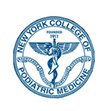Computed Tomography
A computed tomography (CT) scan is an imaging procedure that uses an X-ray machine connected to a computer to create a series of detailed images (slices) of the structures of your body. X-rays are directed on your body in the form of a circle. A contrast substance may be used to enhance the CT imaging.
The CT scan is usually indicated when detailed imaging is required to investigate certain conditions.
You are asked to fast prior to the procedure if a contrast substance is to be used. This contrast may either be swallowed or given through an intravenous line. You will lie on a table that slides into a circular opening of the CT machine. The technologist who performs the procedure observes and communicates with you through a speaker from an adjoining room. A scanner in the machine rotates around you and X-rays are passed through your body, picked up by the scanner and relayed to the computer. You are advised to remain still during the entire procedure and may occasionally have to hold your breath. Following the procedure, you are monitored for a period of time, and may then resume your regular activities.
The risks of the procedure are mostly related to the contrast dye to which you may be allergic or which may be contraindicated in certain conditions.



